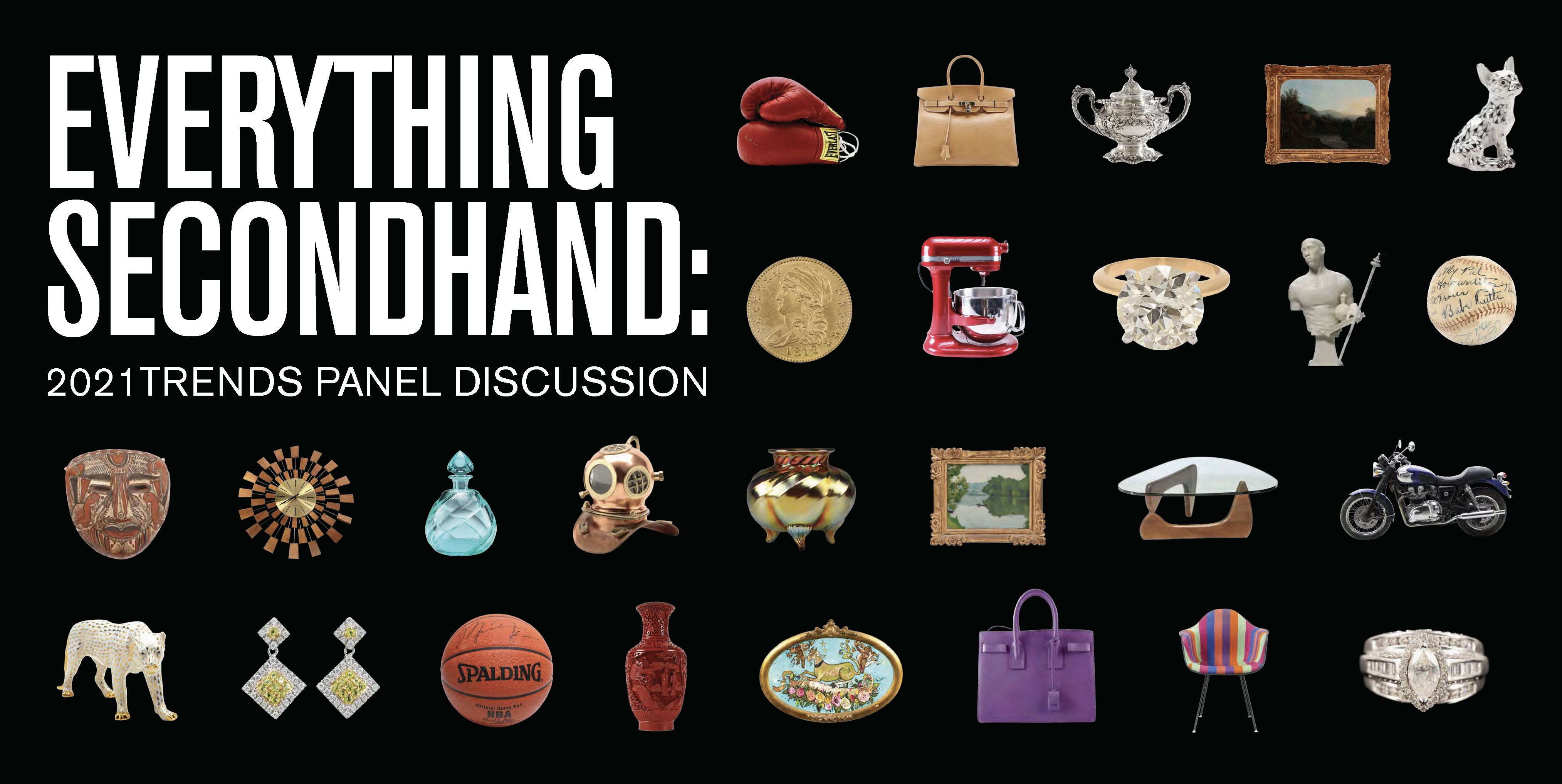
Brian Graves
President & Co-Founder
In modern history, volumes of consumer goods and furnishings already exist that can sustain the needs of both current and future generations - many with a timeless design manufactured to last indefinitely with proper care. However, manufacturers continue to mass-produce and market consumer goods beyond our basic needs to stock the shelves and drive sales, often with a limited if not intentional lack of focus on product life span and a disregard for sustainability. After decades of increased industrialization promoting a throwaway culture that encouraged buying new rather than repurposing pre-owned, a societal shift recognizes sustainable choices and personal assets as investments are essential to our future.
As our eyes open to the environmental and human costs associated with the industry in excess, segments of the market have begun to see the tremendous value in extending the lifespan of consumer goods. Look no further for an example than in the fashion world. Fashion has shined a spotlight on the negative impact of these practices and the sector continues to work on minimizing it. Other sectors have followed suit. With this heightened awareness, more people have begun to embrace pre-owned benefits - higher quality items with better craftsmanship and uncommon designs - that help reduce society's negative footprint.
Extending the lifespan of pre-owned goods is one of our founding principles and remains intertwined throughout our business, including our name - Everything But The House (EBTH). We're excited to see this momentum and interest in shopping resale and online accelerated by the pandemic in 2020. As society navigated the uncertainty of lockdowns and the journey towards keeping everyone healthy and safe, the accelerated adoption of e-commerce and more time spent at home caused many of us to reflect on our living spaces, focusing on comfort and individuality. The benefits of secondhand became even more appealing to a broader audience as individuals looked to create dynamic spaces and wardrobes that reflected a more personal and comfortable style while looking at consumer goods as an investment.
In this moment of societal reflection, we sought to look more widely across the landscape, explore our data, and identify some key insights into the next evolution of resale. By partnering with the insights team at international branding agency LPK, we've determined what we see as new shifts and behaviors forthcoming in secondhand. As EBTH looks ahead, we're excited to leverage and develop our relationships, technologies, and data to inform a more sophisticated marketplace. It's a marketplace that connects sellers with shoppers who embrace an item's history, quality, and uncommon character. All while taking pride in extending the life of secondhand goods and playing their role in the transition from one caretaker to the next.
EBTH TRENDS OUTLINE:
- UPFRONT/FRAMING
- TRENDS + MANIFESTATIONS

I. FRAMING: A NEW MODERNITY
2020 has reshaped a shift in consumer values and aspirations—this is clear. A new generation, shaped by its cultural experiences as children of the great recession and witness to the cultural challenges of the early 2000's, will spend and invest in accordance with its values. Today's consumer desires a respite from the ubiquity and wasteful consumption that has resulted from modern, globalized manufacturing. They are increasingly rejecting of the frivolousness of fast fashion, the waste of planned obsolescence, and the democratization of design that has ultimately led to a homogenization of style. This backdrop explains why the already thriving resale market is expected to see continued growth and will reach a combined $1.36 trillion in the next five years, according to a recent study by OfferUp conducted by data analytics firm GlobalData.

II. TRENDS + MANIFESTATIONS
The continued COVID-19 pandemic has marked a return to the values of frugality and prudence of generations past, acting as a backlash to the unchecked accumulation of lower-quality, McMansion-era "stuff" that was embraced by our parents. Now, we harken back to the attitudes of our grandparents with nostalgia, appreciating the level craftsmanship and meaning that now seems lost to the past. "They don't make things like they used to" has never rung more true.

The decades-long history of white, male dominance of American Modernism will come to closure as modernity is redefined in the wake of the resurgence of Black Lives Matter. A new breed of progressive, young collectors seeking to curate collections that meaningfully reflect their values of diversity and inclusion will choose works that express their cultural awareness and social savvy.

Art in the Aftermath of BLM
"Let's just say that, for some time, it has been uncool and unsophisticated to have a collection that is made up entirely of white male artists. But, this summer, that shifted into being completely unacceptable—a racist embarrassment."- Sara Thornton, former chief writer on art for the Economist
This year has drawn consumers' focus and reflection to the inequities in America and has positioned the American art world at a meaningful inflection point.
Politics, Presidents and Rainbows
"I like the rainbow—good things to follow."- First Lady, Dr. Jill Biden
This month, when the Biden's took part in the tradition of hanging an official inauguration painting in the Rotunda, the piece chosen was not without symbolism and optimism. Just weeks after the Capitol insurrection and in the aftermath that brought racial inequity into focus, Dr. Jill Biden chose a painting she characterized as "optimistic." Landscape with Rainbow, 1859 by the black, Civil War era artist and painter, Robert S. Duncanson, was chosen from the Smithsonian American Art Museum's collection. The Cincinnati-based artist was known in the 1800s as the first internationally known, African-American painter.


The New Millennial Mindset
"(Millennials) place an unprecedented emphasis on tackling social and racial injustice. These "activist" consumers seek brands that align with their vision and desire for purpose."- Federica Levato, partner at Bain and Co.
As younger generations assert their values of diversity and inclusion, brought to the fore in 2020, a generation of collectors is set to drive 180 percent of the growth in the market from 2019 to 2025 (Bain), will do so from a progressive viewpoint.
|
|
Carmeon Hamilton
Owner & DIY Influencer
Nubi Interiors Memphis-based interior designer, content creator and lifestyle blogger discovering the beauty in all things and helping others find beauty in what surrounds them every day. |
Transcription"One, I would like to say that people from their respective cultures are looking to represent themselves in their physical spaces. So people like me and the whole community around me, I personally am looking for black artists, black sculptors, black weavers, things that are represented heavily and made by the people that look like me, so in that respect I think a lot of people, no matter what culture they are, are going to the source for pieces that can connect directly to them and their heritage, so absolutely this is something that is going to be a revival of sorts. I think people are now looking for more artists of color even outside of their own particular cultures, I think it's been heavily prevalent, like we all know that, white, and what is considered great art is heavily influenced by the European perspective, and I think a lot of people are just over it, and our understanding that there's so much more out there, beyond what we've been forced to swallow over several generations" |
|
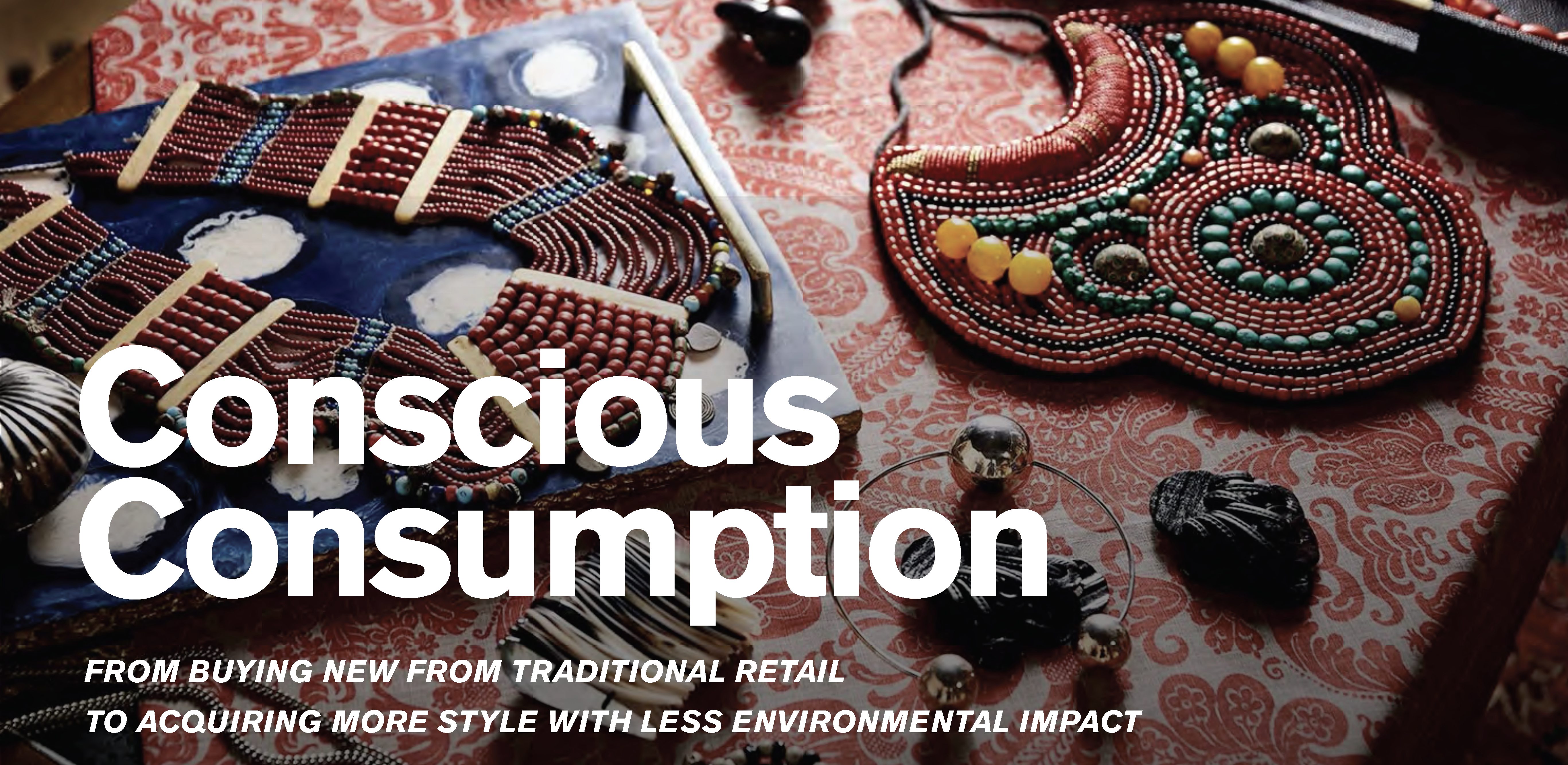
The last 30 years have been the stage for a pendulum shift in attitudes related to consumption. The lure of the new and shopping as entertainment has brought with it environmental and socioeconomic consequences. Today, dollars are spent with their impact in mind—buying with consideration rather than compulsion.

The Virtues of an Acquired Aesthetic
"Much like fashion, we are conscious of our consumption; …we'll buy less stuff and make it last longer, with the clashing of styles resulting in a timeless aesthetic."- Haley Roban co-founder of Day True Architectural Interiors
From LEED-designed buildings to sustainable materials, we expect more from what we purchase new—weighing it against the virtues and legacy of designs from the past.
An Ethic of Style and Discovery
"Initially, I wanted to wear that "new with tags" outfit every day because I knew it was new, but quickly I craved variety and knew I could never get it if I only ever bought my wardrobe brand new."- Iris Apfel on the Art of Finding
Consumers recognize that things can be bought, but style comes with time and discretion. Now a badge of consumer savvy, finding value in the secondhand market demonstrates knowledge and acumen.


An Argument for Craftsmanship
"The renaissance of upcycling has pushed beyond amateur restoration to become a skilled craft. Pieces are lovingly restored…to create a new hybrid which will sit proudly within every interior."- Calum Wild, from the buying team at London's Liberty
No longer simply the realm of amateur DIY projects, the rise of up-cycling has lead to a renaissance of artistry finding a new canvas upon the objects of yesterday.
|
|
Amanda Clifford
Executive Editor
House Beautiful Multi-channel content creator and editor who has appeared on NBC, CBS, Cheddar, and the Today Show talking about everything from design trends to celebrity homes. |
Transcription"I think they're going to be forced by the tide of what people want in this moment to evolve. I don't know that they're going to go away, it seems unlikely that we're just going to lose Walmart but will Walmart be forced to accept that the demand is different and the demand once was, I hope so, I think we see something we have insights into from a publishing perspective is like what's happening on search and what people are looking for on Google is one of the most interesting parts of working for a magazine right now. And you know searches are up for the eco-friendly home décor, searches are up for the best vintage home, you know, suppliers and we are generating content often based on what we know people want to see and watch, so that is encouraging." |
|









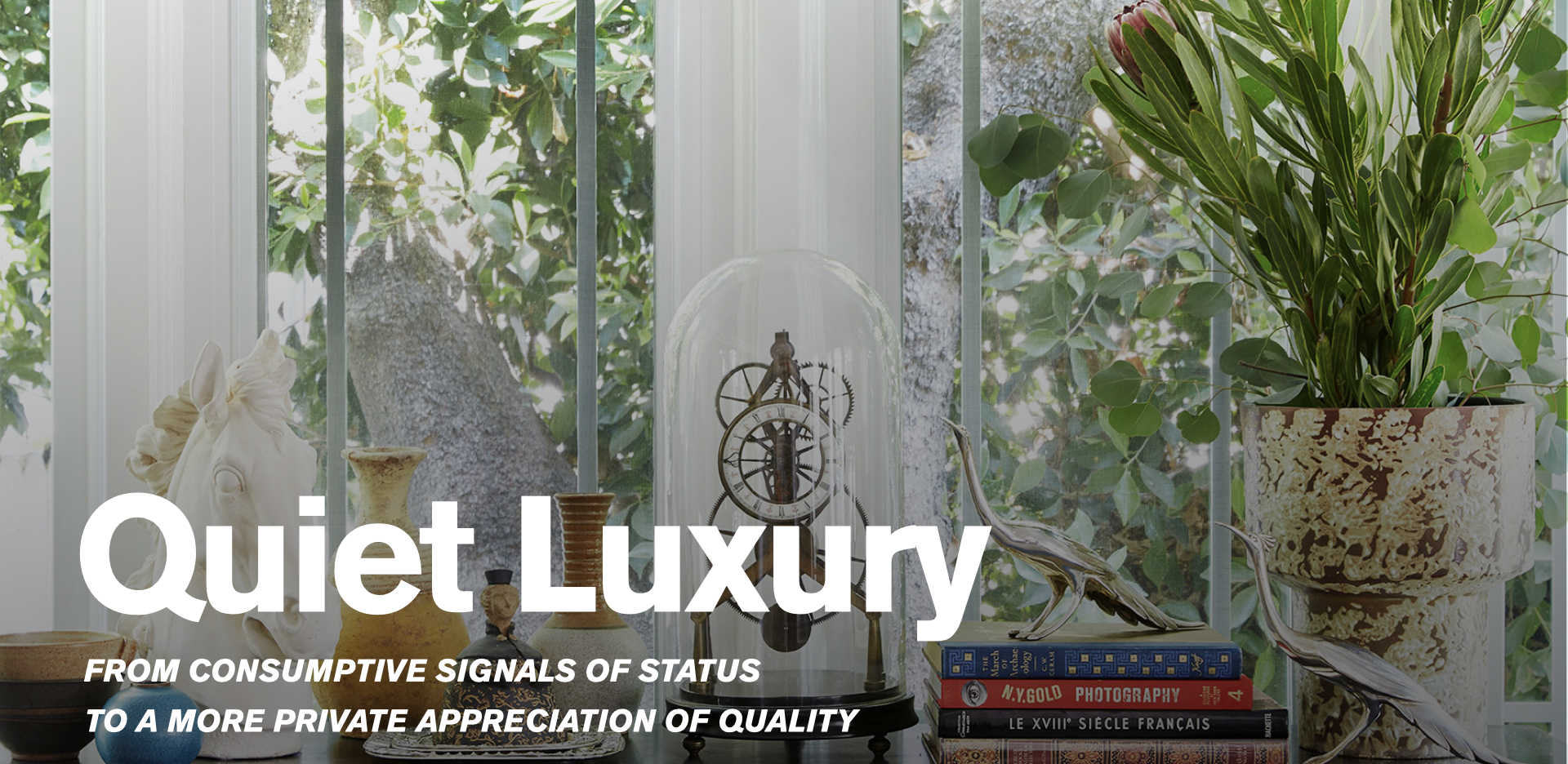
The socioeconomic, environmental and racial crises of 2020 have reshaped our values and aspirations—complicating our associations with luxury and privilege. It's a shift from social assertion through acquisitions and status to a more private appreciation of qualities of endurance and craft that reflects consumers' values.

Cult Classics
"The aftermath is expected to heighten consumers' desires for 'practical items' from brands with loyal followings, and a reliance on neutral tones and other simple, solid color palettes."- Business of Fashion
In the wake of the pandemic, luxury brands Gucci is returning to the luxury lever of restraint, classicism. The aftermath is expected to heighten consumers' desires for "practical items from brands with loyal followings, and a reliance on neutral tones and other simple, solid color palettes," according to Business of Fashion. In Gucci's secondhand partnership with The Real Real in 2020, the brand's best-selling pieces were also some of its most iconic—the classic double-G belt and the iconic horse-bit loafers.
The Art of Stealth Wealth
"People looking privately and at auction are doing more business overall."- David Schrader, Head of Worldwide Sales, Sotheby's
As the disparity of the economic gap widens, many private collectors are less comfortable bidding in public auctions and are instead choosing behind-the-scenes sales directly with auction houses. Similarly, online auctions offer a degree of anonymity. In an online auction in June for Sotheby's, an unnamed bidder set a record price for a work sold through an online bid when Jean-Michel Basquiat's Untitled (Head) from 1982 sold for $15.2 million.
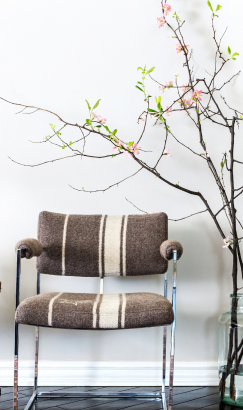

Luxury on the DL
"…After a large-scale crisis with a heavy emotional toll, consumer preferences could shift…toward "silent luxury"—paying more attention to classic elements, such as craftsmanship and heritage, and less to conspicuousness and "bling."- McKinsey, April 2020
A recent McKinsey study outlines how in the aftermath of a global crisis the heavy emotional toll it takes on consumers traditionally results in a shift toward what the firm terms as "silent luxury."
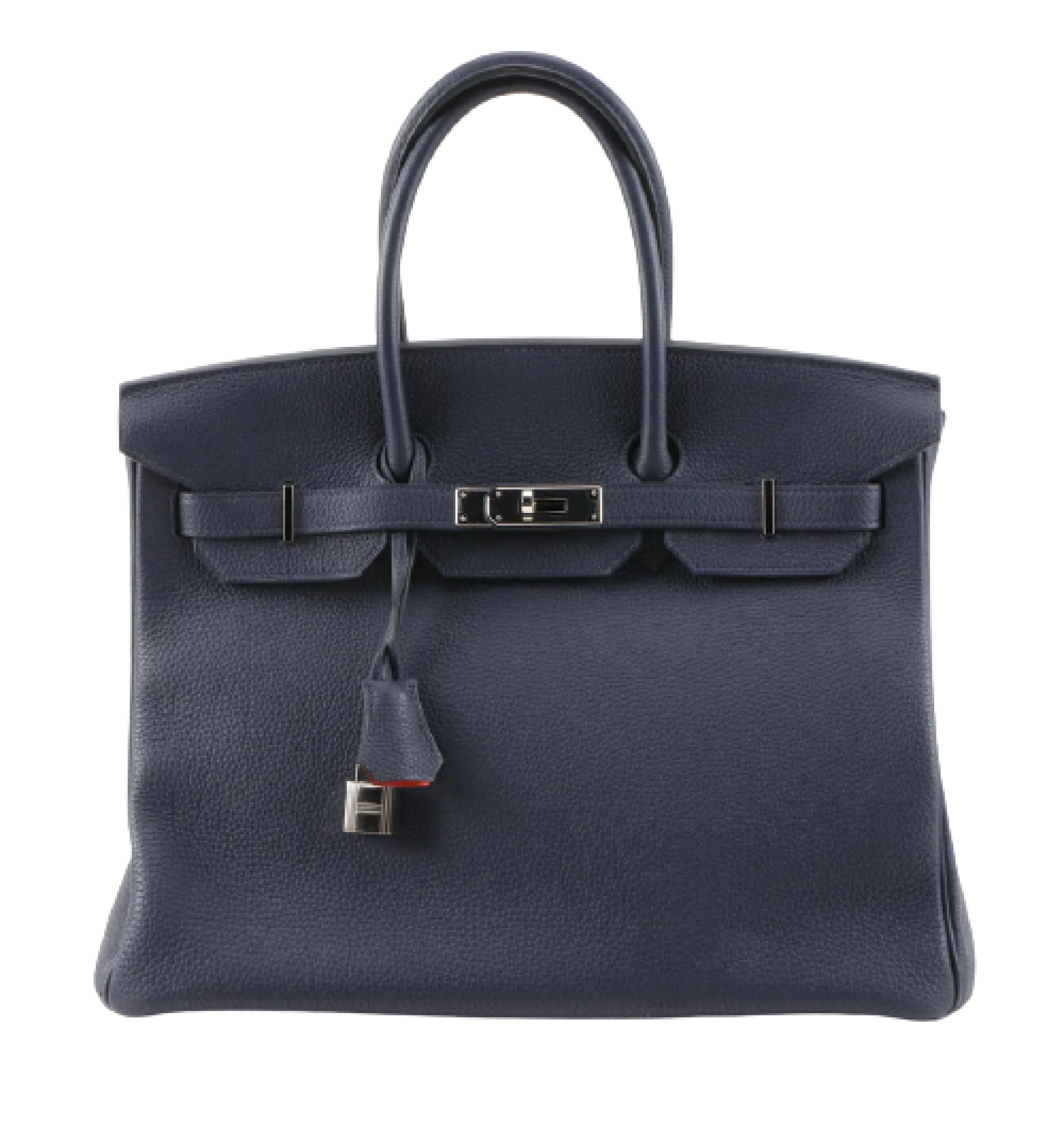
de Prusse Togo Leather Winning Bid: $9,500

Winning Bid: $76,000

Circa 1947 with Catalogue Winning Bid: $40,000

at The Aronoff Center Winning Bid: $33,500
 Timeless Jewelry
7.25 CTW Diamond Ring
Platinum with GIA Report
Timeless Jewelry
7.25 CTW Diamond Ring
Platinum with GIA Report
Winning Bid: $45,026
 Collectible Accents
Soviet Russian Porcelain
Group "Radio for the Village"
Collectible Accents
Soviet Russian Porcelain
Group "Radio for the Village"by Naum Kongiser Winning Bid: $54,911

Driven in part by the COVID-19 pandemic and an increase in time spent at home, curating a space that's reflective of the individual has become progressively more important. A newfound focus on eclecticism, maximalism and the rejection of mass production and quality work in direct opposition to the hyper-simplified, austere aesthetics of minimalism before it. Now, an accumulation of items—hand touched with stories attached-- offer a sense of comfort in an otherwise precarious reality.

The New Maximalism
New Maximalism offers a "more inclusive, expansive approach to design, encouraging us to curate deeply personal collections of joy."- "Minimalism is Dead—Meet Maximalism", Vox Magazine
The sterile restraint of minimalism is facing a backlash in a time where consumers desire comfort and humanity. Welcome to Maximalism.
The Return of Humanity
"The pandemic has not only grimly parodied the catchall consumer trend known as minimalism; it has spotlighted the inhumanity that can underlie it."- Spencer Kornhaber, The Atlantic
The Atlantic reports that the global crisis has spurred "revenge of the stuff" as many flock to fill their homes with both physical and emotional necessities, rejecting the Kondo-esque practices of the 2010's.

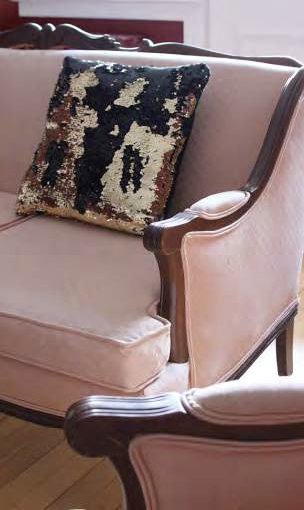
Curated Surroundings
"As we continue to be anchored to our homes, we're compelled more than ever to surround ourselves with objects that have endured, that have an interesting backstory, that are highly personal, and that feel at once familiar and fresh to the eye."- Anthony Barzilay Freund, Coveteur
The isolation of the quarantine has drawn consumers' eyes toward objects with meaning and narrative to populate their surroundings.
|
|
Elizabeth Wasserman
Owner - Abbott Hill house
Creative Director - Fred Segal Collaborative designer of her net-zero, timeless and extremely liveable family home and sustainable fashion creative. |
Transcription"I love walking into people's houses that you can get to know them very quickly by just kind of looking around and seeing what they like, how they want to express themselves. And I know personally, like when we were doing the four interiors for out place like more is always more to me with some restraints and limitations, but I love texture, I love color, I love art, I love design, and so you know, a mixture of like things that actually have like imbued value from like our past are important, but things that gave joy through like color and texture are important and then also when we do by like vintage, which pre-covered, I was in the thrift store every weekend now I just am on the Internet, but I think that you can also find things that speak to you and it's a unique thing versus as we were talking about in the last time, if you buy that table at TJ Maxx or Target, everybody can have that table and I love the democratization of almost anything other than this, because there's no personality there. But if you find something that's unique and vintage then like that's calling to you, whether it's like a cabbage printed floral velvet couch or a strange ceramic and that might speak to you in a way that doesn't speak to anybody else and then you're just having a conversation" |
|
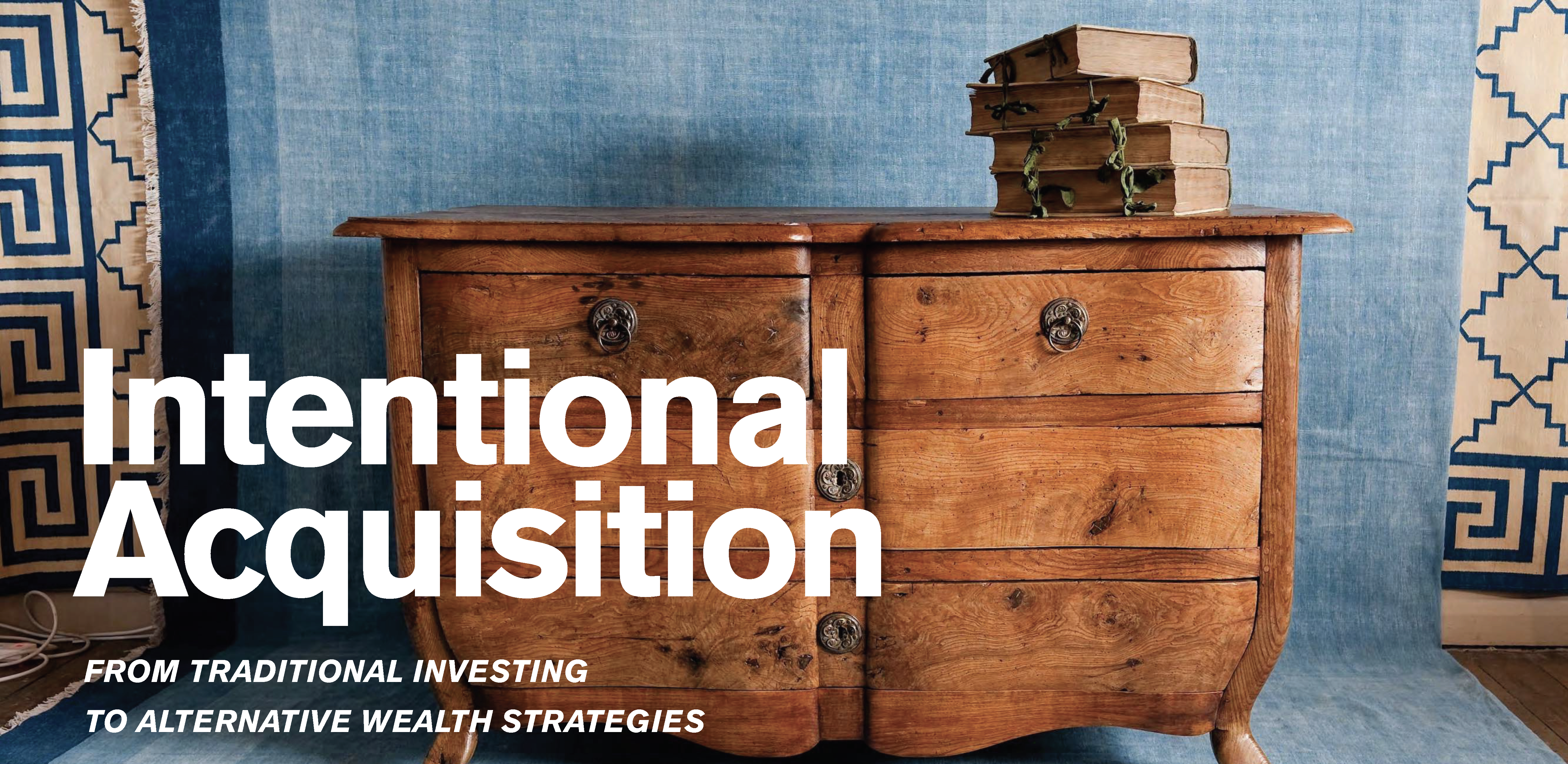
Driven in part by the COVID-19 pandemic and an increase in time spent at home, curating a space that's reflective of the individual has become progressively more important. A newfound focus on eclecticism, maximalism and the rejection of mass production and quality work in direct opposition to the hyper-simplified, austere aesthetics of minimalism before it. Now, an accumulation of items—hand touched with stories attached-- offer a sense of comfort in an otherwise precarious reality.

Recession-Proof Investments
"Alternative investments like art, antiques and other collectibles can serve as a hedge when assets like stocks and bonds and the rest of the financial markets are suffering."- Alexis Rhiannon via Business Insider
Consumers are increasingly applying their knowledge about certain luxury categories to work as a means of mid-term money management.
Art as Asset
"Millennials are twice as likely as any other age group to view art as a financial asset."- US Trust's "Insights on Wealth and Worth" survey
Until 2020, the art market was reluctant to embrace digital channels. While the market sales as a whole declined, online sales made up roughly 7.5% of global sales, up 4% over the prior year. As younger buyers who view art as an asset enter the market, this trend is sure to accelerate.


Fashion Flipping
"Handbags were the number one collectible investment in 2019, beating out art, stamps and rare whisky."- Knight Frank Luxury Investment Index
The demand for secondhand luxury goods has steadily increased over the past twenty years as consumers recognize greater appreciation of many fashion goods that can be realized from interest from a traditional savings account.
|
|
Konstantin Golovchinsky
Owner & Curator,
Object Quality Antiques Avid collector and curator of "Edwardian Cool", proprietor of West LA's Object Quality Antiques and experienced dealer of useful decorative objects that deserve to be cherished. |
Transcription"I refocus my collection and now, instead of buying anything that comes my way I may be by one piece a year. I spent decent money on it, several thousand dollars per piece, because I know that a higher grade piece is always going to be worth more and always going to be attractive to other serious collectors, whereas the low end stuff is probably just going to be flat, it's going to be like parking your money, it's going to be a level piece for somebody who is just getting started in that collection, but even if you are getting started, I recommend that you buy a higher end piece to begin with starting your collection on a high note and then always strive to buy better than the last piece to build your collection" |
|







STAY DIALED IN
Our uncommon secondhand marketplace is constantly evolving and changing. If you have any questions about where the industry is headed, what's hot, and what's not, stay in touch with our team at Everything But The House. We'll regularly update these trends and can also dig up more if you are working on anything else.
For more information, help with a story, or to take part in our next trends report, contact:
Secondhand September™
To celebrate making preowned items new again, and helping to reduce waste and overconsumption, Everything But the House has something big coming in September - Secondhand September™. Throughout September, join us in embracing the benefits of pre-owned goods by seeking higher-quality items with better craftsmanship and distinctive designs that reduce society's negative footprint.






